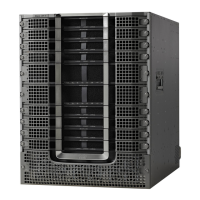To prevent chassis overheating, never install a Cisco cBR-8 router in an enclosed room that is not properly
ventilated or air conditioned.
Caution
• Always install heavier equipment in the lower half of a rack to maintain a low center of gravity to prevent
the rack from falling over.
• Install and use the cable-management accessories included with the Cisco cBR-8 router to keep cables
organized and out of the way of the cards and processors. Ensure that cables from other equipment already
installed in the rack do not impair access to the cards or require you to disconnect cables unnecessarily
to perform equipment maintenance or upgrades.
• Install rack stabilizers (if available) before you mount the chassis.
• Provide an adequate chassis ground (earth) connection for your Cisco cBR-8 chassis.
Cabling Guidelines
The size of your networks and the distances between connections depend on the type of signal, the signal
speed, and the transmission media (the type of cabling used to transmit the signals). For example, standard
coaxial cable has a greater channel capacity than twisted-pair cabling. The distance and rate limits in the
following descriptions are the IEEE recommended maximum speeds and distances for signaling; however,
you can usually get good results at speeds and distances far greater than these. For example, the recommended
maximum rate for V.35 is 2 Mbps, but it is commonly used at 4 Mbps without any problems. If you understand
the electrical problems that might arise and can compensate for them, you should get good results with rates
and distances greater than those shown here; however, do so at your own risk.
When preparing your site for network connections to the chassis, you must consider a number of factors
related to each type of interface:
• Type of cabling required for each type (fiber, thick or thin coaxial, foil twisted-pair, or unshielded
twisted-pair cabling)
• Distance limitations for each signal type
• Specific cables you need to connect each interface
The extent of your network and the distances between network interface connections depend in part on the
following factors:
• Signal type
• Signal speed
• Transmission medium
Cisco Converged Broadband Routers Hardware Installation Guide
53
Prepare to Install
Cabling Guidelines

